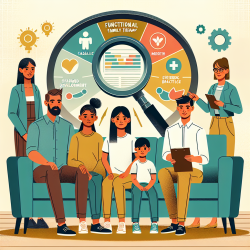Introduction
The COVID-19 pandemic has posed unprecedented challenges to educational institutions worldwide. As schools strive to provide a safe learning environment, the implementation of effective mitigation strategies is crucial. The research article "Pilot Investigation of SARS-CoV-2 Secondary Transmission in Kindergarten Through Grade 12 Schools Implementing Mitigation Strategies — St. Louis County and City of Springfield, Missouri, December 2020" provides valuable insights into the effectiveness of these strategies. By understanding and applying these findings, educators can enhance their skills and contribute to safer school environments.
Key Findings from the Research
The study conducted in St. Louis County and Springfield, Missouri, focused on evaluating the secondary transmission of SARS-CoV-2 in K-12 schools that implemented various mitigation strategies. Key findings include:
- Schools with rigorous mitigation measures reported lower transmission rates compared to the community.
- Mask mandates, physical distancing, increased ventilation, and modified quarantine policies were effective in reducing transmission.
- Only 2% of tested school-based contacts resulted in probable secondary transmission.
Implementing Research Outcomes in Practice
Educators and school administrators can leverage these findings to enhance their COVID-19 mitigation strategies. Here are practical steps to consider:
- Enforce Mask Mandates: Ensure that all students, teachers, and staff wear masks appropriately to minimize transmission risks.
- Promote Physical Distancing: Arrange classrooms to maintain at least 3 feet of distance between desks and utilize barriers where necessary.
- Enhance Ventilation: Increase outdoor air circulation by opening windows and doors, and use fans to improve airflow.
- Implement Modified Quarantine Policies: Allow students who meet specific criteria to continue in-person learning during quarantine, reducing disruptions.
Encouraging Further Research
While the study provides valuable insights, it also highlights areas for further research. Educators are encouraged to explore the following:
- Investigate the long-term effects of modified quarantine policies on educational outcomes and mental health.
- Assess the impact of different ventilation strategies on indoor air quality and transmission rates.
- Study the effectiveness of various mask types and usage protocols in diverse school settings.
Conclusion
The research underscores the importance of implementing comprehensive mitigation strategies to reduce SARS-CoV-2 transmission in schools. By applying these findings, educators can create safer learning environments and minimize disruptions to in-person education. Continuous research and adaptation of strategies will be key to navigating the ongoing challenges posed by the pandemic.
To read the original research paper, please follow this link: Pilot Investigation of SARS-CoV-2 Secondary Transmission in Kindergarten Through Grade 12 Schools Implementing Mitigation Strategies — St. Louis County and City of Springfield, Missouri, December 2020.










